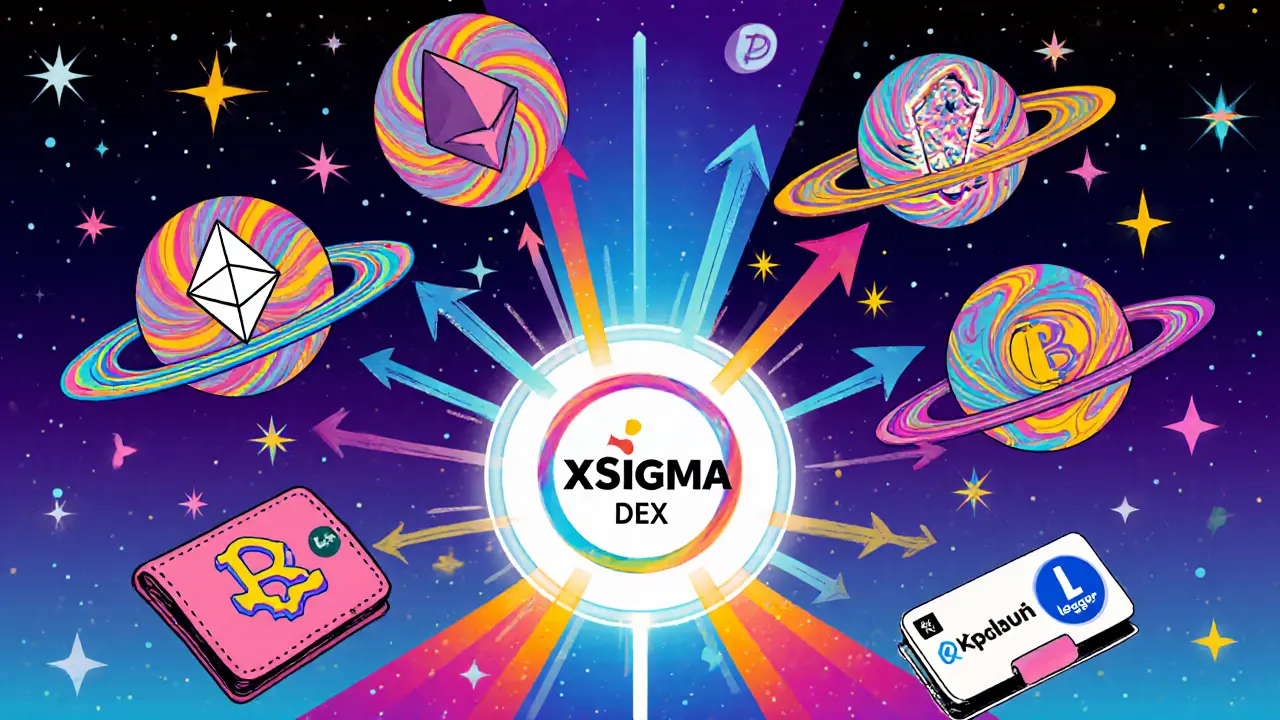xSigma DEX Review – In‑Depth Look at Fees, Security, and Liquidity
When working with xSigma DEX, a decentralized exchange built on a layer‑2 solution that aims to cut trading fees and boost transaction speed. Also known as xSigma, it lets users swap tokens directly from their wallets without a central order book. In plain terms, you keep custody of your coins while the protocol handles matching and settlement. This design removes the need for a traditional broker, which is why the platform attracts both hobbyists and professional traders looking for cheaper, faster swaps.
The backbone of any Decentralized Exchange, a crypto marketplace that operates without a central authority, relying on smart contracts to execute trades. As a DEX, xSigma inherits the benefits of transparency and permissionless access, but it also inherits the challenges of liquidity fragmentation. Understanding how a DEX works is essential before you jump into token swapping, because the user experience hinges on the smart contract logic rather than a UI layer you might find on a centralized platform.
One of the key ingredients that keeps a DEX functional is its Liquidity Pools, collections of token pairs locked in smart contracts that provide the depth needed for traders to execute swaps without large price impact. xSigma DEX requires liquidity pools to match buyers and sellers instantly; without sufficient liquidity, you’ll face higher slippage and longer wait times. The platform encourages liquidity providers with incentive programs, which means the health of these pools directly influences the overall trading experience.
When you initiate a Token Swap, the process of exchanging one cryptocurrency for another via an automated market maker or order‑matching algorithm on xSigma DEX, the protocol calculates the exchange rate based on pool reserves. This is where xSigma DEX review insights become valuable: the platform claims sub‑0.1% fees, a figure that can make a big difference on high‑volume trades. Lower fees attract crypto traders looking to maximize net returns, and the fee structure can also affect how much liquidity providers earn from pool rewards.
Security is another pillar that can’t be ignored. A thorough Security Audit, an independent code review that checks smart contracts for vulnerabilities, backdoors, and economic exploits influences xSigma DEX reliability. The platform proudly lists multiple audit reports from reputable firms, but the real test is how it responds to emerging threats. Audits influence user confidence, and a well‑audited contract reduces the risk of hacks that could drain liquidity pools or corrupt swap logic.
What you’ll find in this collection
The articles below cover the whole ecosystem surrounding xSigma DEX. You’ll see detailed fee breakdowns, step‑by‑step guides on providing liquidity, comparisons with other DEXes, and security checklists to keep your assets safe. We also link to broader DeFi topics—like passive income strategies, tokenomics analysis, and compliance guides—because a solid understanding of the surrounding landscape helps you make smarter decisions on any exchange.
Now that you have a clear picture of how xSigma DEX fits into the larger decentralized finance world, dive into the posts to see practical examples, real‑world data, and actionable tips that can boost your trading game. Whether you’re curious about swapping, earning yield, or just want to verify the platform’s safety, the collection ahead has you covered.
xSigma DEX Review: Stablecoin Exchange Performance, Fees & Future Roadmap
A detailed xSigma DEX review covering its stablecoin‑only model, slippage, fees, $SIGMA tokenomics, pros/cons, and future roadmap for traders and investors.
